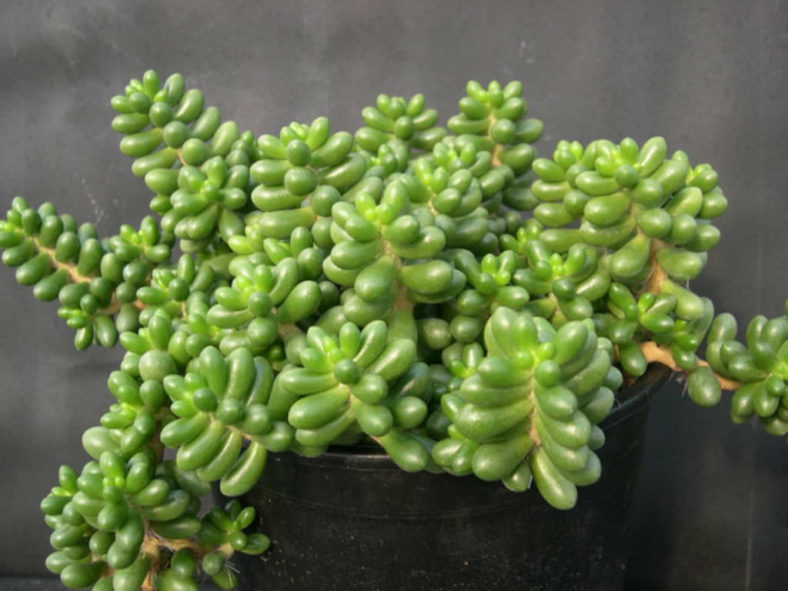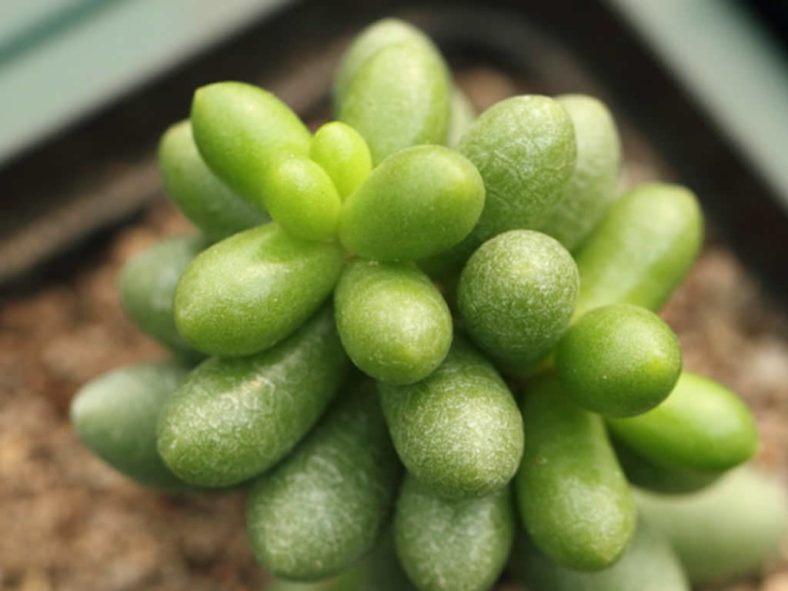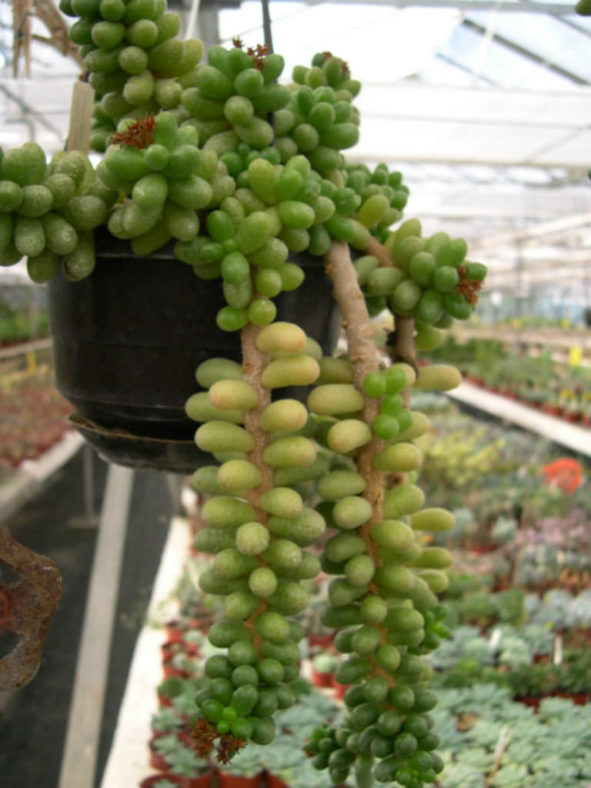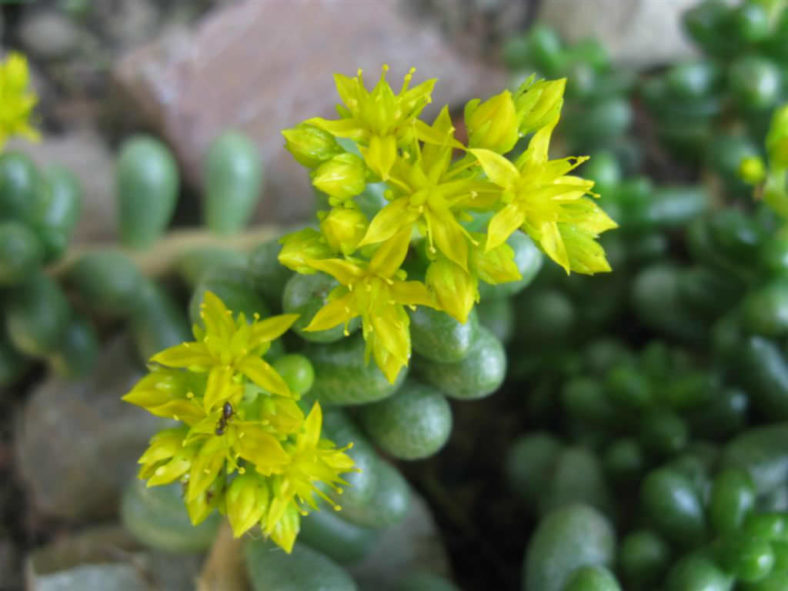Scientific Name
Sedum hernandezii J. Meyrán
Scientific Classification
Family: Crassulaceae
Subfamily: Sempervivoideae
Tribe: Sedeae
Genus: Sedum
Origin
Sedum hernandezii is native to Mexico (Puebla). It grows on hill slopes with oak forests at elevations of about 8,200 feet (2,500 m).
Description
Sedum hernandezii is a much-branched succulent with ascending to pendent, branched stems and chubby, emerald green leaves arranged in whorls of 5. It can grow up to 6 inches (15 cm) tall. The leaves have the same cracked epidermis as Sedum furfuraceum. They can measure up to 0.6 inches (1.5 cm) long and 0.5 inches (1.3 cm) wide.
The flowers are star-shaped with five yellow petals and appear in clusters at the end of the branches in winter and spring.

Hardiness
USDA hardiness zones 9a to 11b: from 20 °F (−6.7 °C) to 50 °F (+10 °C).
How to Grow and Care
When growing Sedums, keep in mind that these plants need very little attention or care. They will thrive in conditions many other plants thrive in but do just as well in less hospitable areas. They are ideal for that part of your yard that gets too much sun or too little water to grow anything else. A common name for Sedum is Stonecrop because many gardeners joke that only stones need less care and live longer.
Sedum is easily planted. For shorter varieties, laying the plant on the ground where you want it to grow is usually enough to start the plant there. They will send out roots from wherever they touch the ground and root itself. If you would like to ensure further that the plant will start there, you can add a very thin covering of soil over the plant.
You can break off one of the stems for taller varieties and push it into the ground where you want to grow it. The stem will root very easily, and a new plant will be established in a season or two.
Learn more at How to Grow and Care for Sedum.
Links
- Back to genus Sedum
- Succupedia: Browse succulents by Scientific Name, Common Name, Genus, Family, USDA Hardiness Zone, Origin, or cacti by Genus
Photo Gallery
Click on a photo to see a larger version.


